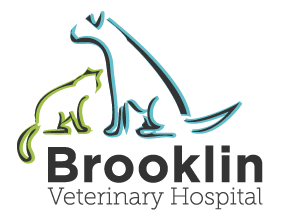Library
-
The main objectives of fracture repair are to promote rapid healing of the fracture and to get the cat using its leg as quickly as possible. In most cases, this involves rebuilding the broken bone and fixing it in that position with metallic implants. Post-operative care includes pain medications, antibiotics, adequate nutrition, exercise restriction, and physiotherapy. Most fractures can be repaired very effectively and in many cases, your cat will resume normal activity.
-
The main objectives of fracture repair are to promote rapid healing of the fracture and to get the dog using its leg as quickly as possible. In most cases, this involves rebuilding the broken bone and fixing it in that position with metallic implants. Post-operative care includes pain medications, antibiotics, adequate nutrition, exercise restriction, and physiotherapy. Most fractures can be repaired very effectively and in many cases, your dog will resume normal activity.
-
The suspensory ligament supports the fetlock and protects it from hyperextension (i.e., dropping too low) at exercise. The ligament begins at its attachment to the back of the upper cannon bone in both the fore and hindlimbs.
-
Skin gland, hair follicle, and sebaceous gland tumors are often benign. Matrical carcinoma and sebaceous gland adenocarcinoma are rare and more aggressive forms of the disease. Regardless of the type (sweat, hair, or sebaceous) diagnosis is made by fine needle aspiration, biopsy, and/or surgical removal and histopathology. Further treatment is reviewed.
-
Sweet Itch is a skin disease (sometimes called summer itch or seasonal allergic dermatitis) and is caused by an allergy to the saliva of certain biting flies or midges (e.g., Culicoides spp.).
-
Syncope (or fainting) is defined as a temporary loss of consciousness that occurs when the brain does not receive enough oxygen. Most dogs who experience syncope spontaneously recover once appropriate levels of oxygen reach the brain.
-
This handout explains syringomyelia and Chiari-like malformation in dogs, in which fluid-filled cavities in the spinal cord develop, leading to an abnormal sensation in affected dogs. The clinical signs of the condition, along with diagnosis, treatment, and prognosis, are described.
-
Systemic hypertension describes high blood pressure throughout the entire body. Hypertension in dogs is often due to an underlying disease (secondary hypertension). When there is no underlying disease, it is called primary hypertension. There are several signs of hypertension including sudden blindness, bleeding inside the globe of the eye, persistently dilated pupils, head tilt, seizures, disorientation, ataxia, circling, weakness or partial paralysis, nystagmus, increased drinking and urinating with the progression of chronic kidney disease, hematuria, and epistaxis. The treatment of dogs with hypertension depends upon the underlying cause. Medications commonly used to manage hypertension in dogs include angiotensin converting enzyme (ACE) inhibitors, angiotensin II receptor antagonists (ARBs), beta blockers, diuretics, and calcium channel blockers. The course of hypertension in dogs depends on the underlying cause.
-
Systemic lupus erythematosus (SLE) is an immune-mediated disease in which a dog's immune system begins to attack her own tissues.
-
Systemic lupus is a rare disease in cats and most commonly affects Siamese, Persians, and Himalayans. It is caused by immune system dysregulation resulting in the immune system attacking different cells in the body. Skin changes can include ulceration or erosions of the face, ears, or entire body. Other systems affected include the kidneys, joints, blood cells, and the central nervous system. Diagnosis is difficult, requiring the presence of a minimum of three of the 11 criteria set by the American College of Rheumatology. Treatment involves suppressing the immune system with steroids and other immunosuppressive medications. Prognosis is guarded, as treatment to control the symptoms will be needed lifelong and in some cases may not be effective.



